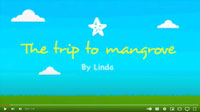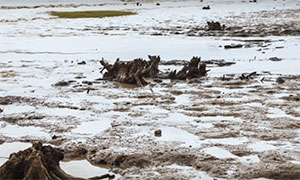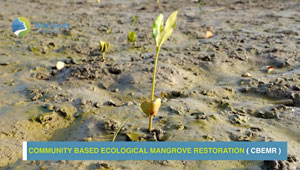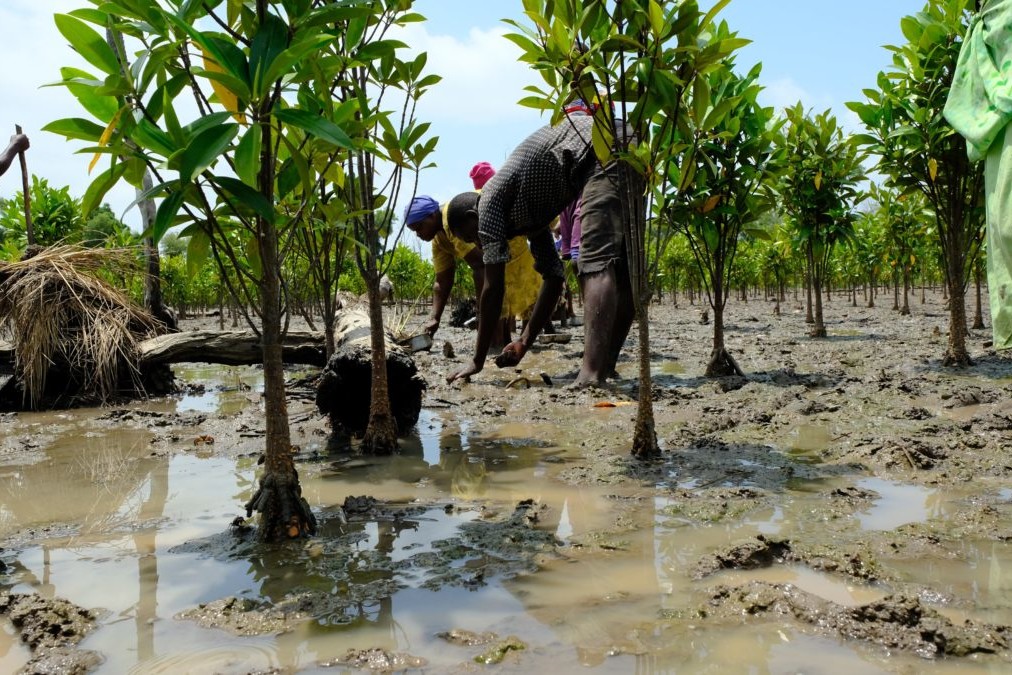|
The MAP News |
|
|
MAP Website en Español haga clic aqui
FEATURED STORY HELP MAP HELP MANGROVES! 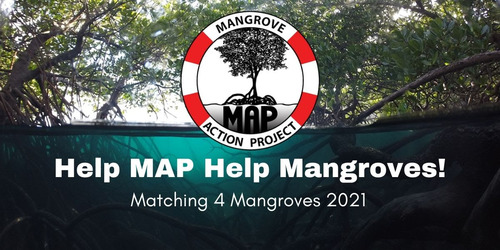 Giving Tuesday was a success for MAP as we were able to surpass the $2,000 matching goal a generous donor provided. We would like to keep the momentum going with a Matching 4 Mangroves campaign for the end of the year. MAP’s Board has challenged us to obtain $5,000 in donations, which they will then match dollar for dollar. We need your generous help in reaching this exciting opportunity! Donate today to help us raise $10,000 for mangroves! Empowering local communities is integral to the success of mangrove restoration projects. In yet another year that limited our ability to be physically present in communities, MAP was able to offer our uniquely formatted training in nature-based mangrove restoration (CBEMR) to people around the world via our online workshops. Even during global shutdowns, the fight against climate change continues. The need to conserve and restore mangroves is even more pressing now than ever before with the growing threats from climate change as pointed out by the recent COP26 conference in Glasgow. In recognition of December as a month for giving, we at MAP would like to meet the challenge made by our Board by enlisting your generous help. We need your help to reach the $5,000 goal for matching funds. With your donation during this matching period, your doubled impact will help us expand our restoration and educational programs. With your help, we can get more communities involved in our process of restoring and preserving the world’s diverse mangrove ecosystems and the important biodiversity mangroves support, while countering the mounting dangers of climate change.MAP has great ambitions in furthering our work across the world and partnering with more NGOs to protect coastal ecosystems and communities at the forefront of the climate change crisis. We need healthy mangrove forests now more than ever. And we need your help to protect and restore these vital habitats. This month of giving, know any amount given to MAP will have a big impact on us and our work in mangrove forests. A heartfelt thank you from all of us as we could not do this work without your support. DONATE NOW! GLOBAL Magic of mangroves: The plant that sequesters more CO2 than rainforests 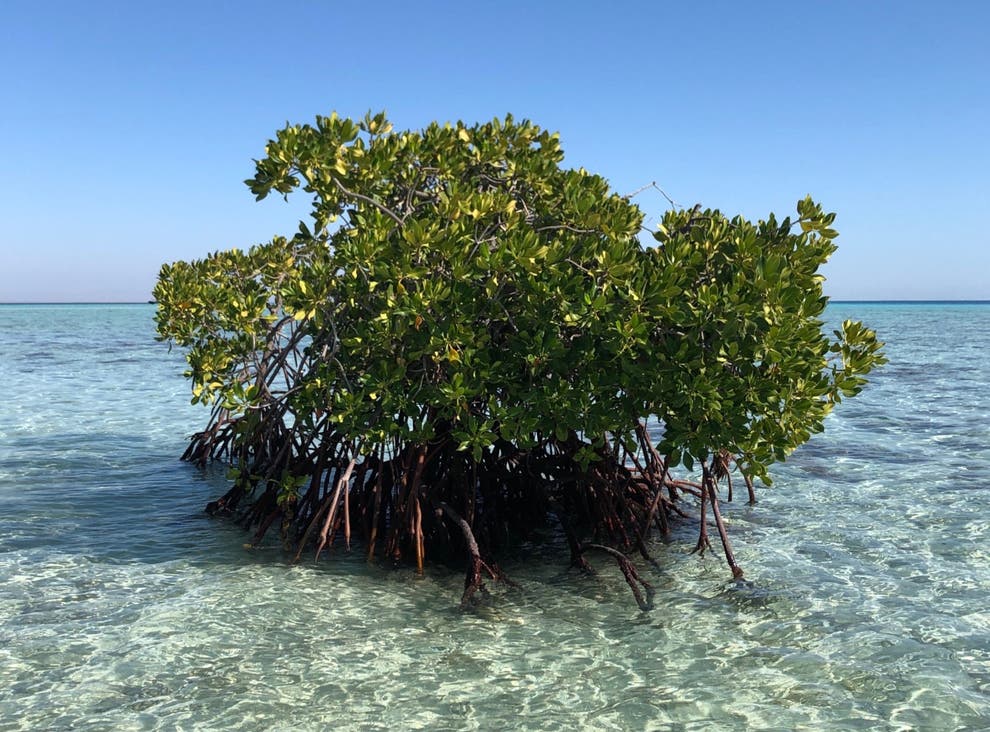 GLOBAL One of the first western records of mangroves appeared in the works of Pliny the Elder, the Roman author and naturalist who lived between AD23 and AD79. He had never seen plants that could grow on water, and wrote of his discovery: “on the Red Sea, the trees are of a remarkable nature”. Almost 2,000 years later, scientists are still discovering remarkable things about these plants, like the fact that they can sequester more CO2 than rainforests, says Professor Carlos Duarte, a leading marine ecologist at Saudi Arabia’s King Abdullah University of Science and Technology (Kaust), and they’re barely scratching the surface. Indeed, there is still much we don’t know about mangroves, including precisely how many species of plants there are. Conservative estimates place the figure at around 50, but this can go up to more than 100 depending on who you consult and how the plants are classified. READ MORE There’s a Global Plan to Conserve Nature. Indigenous People Could Lead the Way.  GLOBAL - Dozens of countries are backing an effort that would protect 30 percent of Earth’s land and water. Native people, often among the most effective stewards of nature, have been disregarded, or worse, in the past. With a million species at risk of extinction, dozens of countries are pushing to protect at least 30 percent of the planet’s land and water by 2030. Their goal is to hammer out a global agreement at negotiations to be held in China later this year, designed to keep intact natural areas like old growth forests and wetlands that nurture biodiversity, store carbon and filter water. But many people who have been protecting nature successfully for generations won’t be deciding on the deal: Indigenous communities and others who have kept room for animals, plants and their habitats, not by fencing off nature, but by making a small living from it. The key to their success, research shows, is not extracting too much. READ MORE Carbon sinks: How nature helps fight climate change 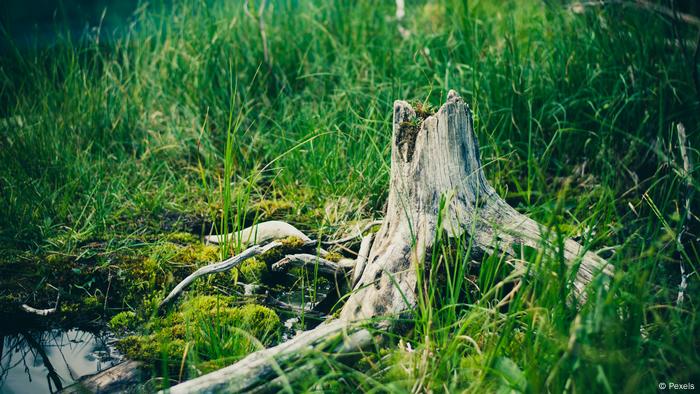 GLOBAL - Smoking industrial chimneys, exhaust fumes, fires in the Amazon — yearly carbon emissions recently swelled to 12,000,000,000 tons (12 gigatons).And as carbon increases, so do temperatures. Around half of emissions released remain in the atmosphere. Nature absorbs the rest, holding it in carbon sinks, such as soil, oceans and vegetation. These natural storage solutions slow climate change far more effectively than any human technology — carbon storage factories store just 40 megatons of CO2 annually or 0.003% of anthropogenic emissions. Natural carbon sinks could perform even better with a little tweaking and for a comparatively small price tag. But humans are destroying more and more natural CO2 sinks, damaging our most successful tool to halt a climate catastrophe. As humans rapidly increased their carbon emissions by burning fossil fuels, the amount of CO2 absorbed by plants, soils and oceans also increased. Plants actually benefit from an oversupply because high CO2 concentrations mean they must open their pores only briefly to absorb the gas. This way they lose less water and can better survive droughts. However, scientists say plants and oceans will soon reach their absorption capacity. For instance, by 2050, ocean surfaces will be completely saturated with CO2. Humanity is also now producing more carbon than nature can process, and so the amount of greenhouse gas in the atmosphere is rising rapidly. READ MORE AMERICAS Cayman Winners in MAP’s International Calendar 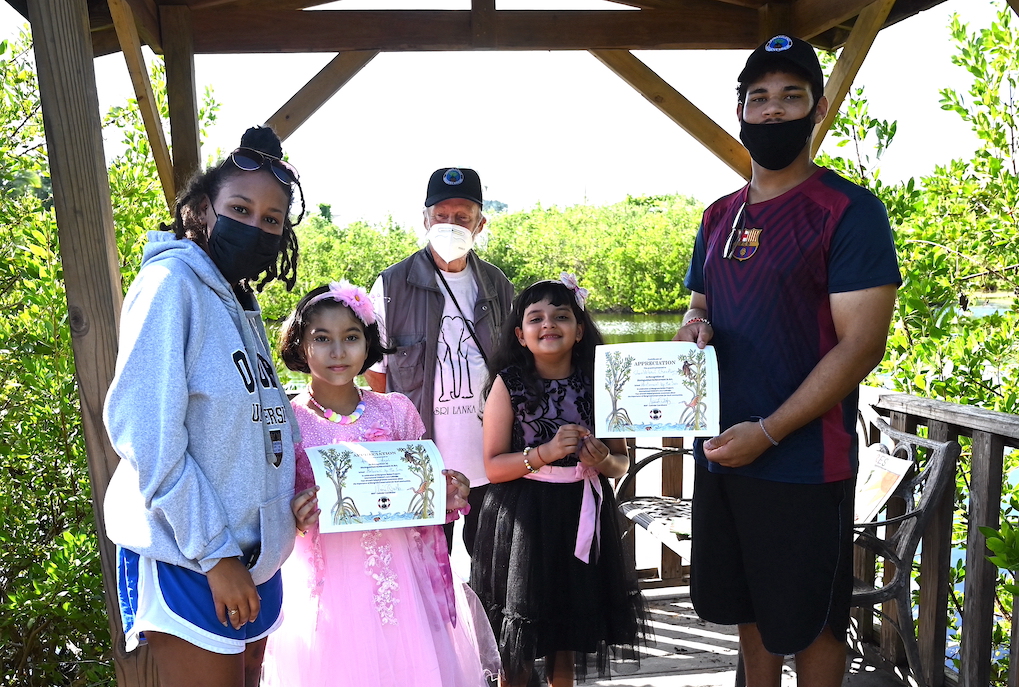 CAYMAN ISLANDS - Arshiya Anuji (left) and Shrubbhavi Choudhary from Montessori-by-the-Sea-School receive their winners’ Certificates and Mangrove Action Project (MAP) Childrens’ International calendars at the Governor Gore Bird Sanctuary in Grand Cayman. Presenting the awards are Rangers Haileligh Farrington and Brandon Wint Executive Ranger Martin Keeley (centre). Two young Caymanians who took part in the first Cayman Mangrove Festival art show were selected to feature in the 2T022 International Children’s Mangrove Art Calendar organized by the Mangrove Action Project (MAP). Arshiya Anuji and Shrubbhavi Choudhary, both aged 7, from Montessori by the Sea school were selected from entries from all over the world sent to MAP for the 20th anniversary calendar. Their artwork, depicting Cayman’s mangroves and Grand Cayman’s various districts, was chosen for the month of December and is featured alongside student art from 12 other countries ranging from Bangladesh to Russia to Malaysia. READ MORE Still Time to Order Your Children’s Art Calendars 2022 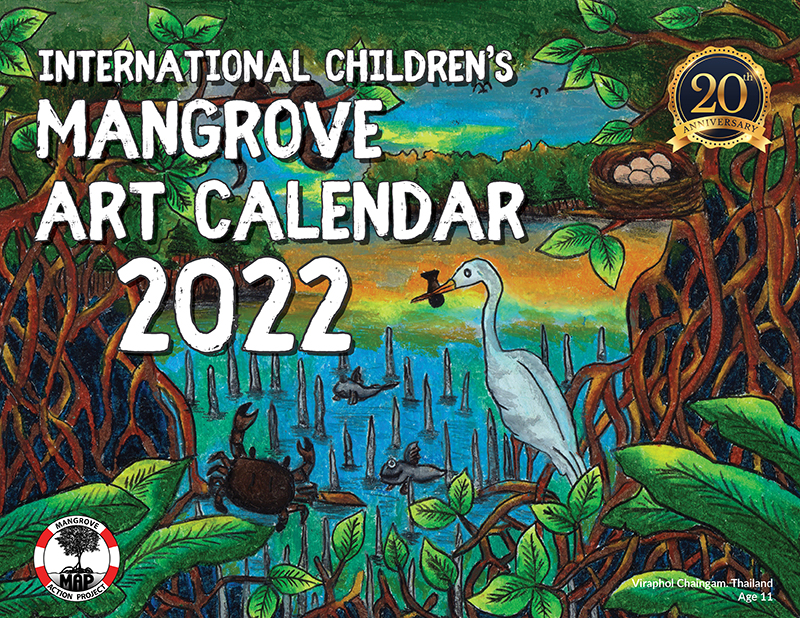 MAP’s International Children’s Art Calendars 2022 are here and ready to order! With beautiful artwork submitted by students from many countries around the world, these calendars both make a great gift, and are a helpful reminder for what we can do to assist in saving our world’s mangroves. All proceeds will go towards furthering MAP’s mission of conserving, restoring, and protecting the world’s invaluable mangrove forests. We wish to thank every child, their teachers and associate non-governmental organizations that participated and collaborated in MAP’s 20th anniversary International Children’s Mangrove Art Contest during 2021. For two decades, MAP’s art contest has been inspiring and creating awareness as well as giving the youths the opportunity to voice and express their point of view on mangrove forests and the problems mangroves face today. We are thrilled to see interest for mangroves continuing to grow among youths, inspiring creative art and learning through participation. Through the art contest, young artists discover the incredible beauty, importance, and biodiversity of mangrove forests, depicting through their art what they have experienced via mangrove field trips, or in the classroom, and home studies. ORDER HERE Researchers crack mangrove puzzle 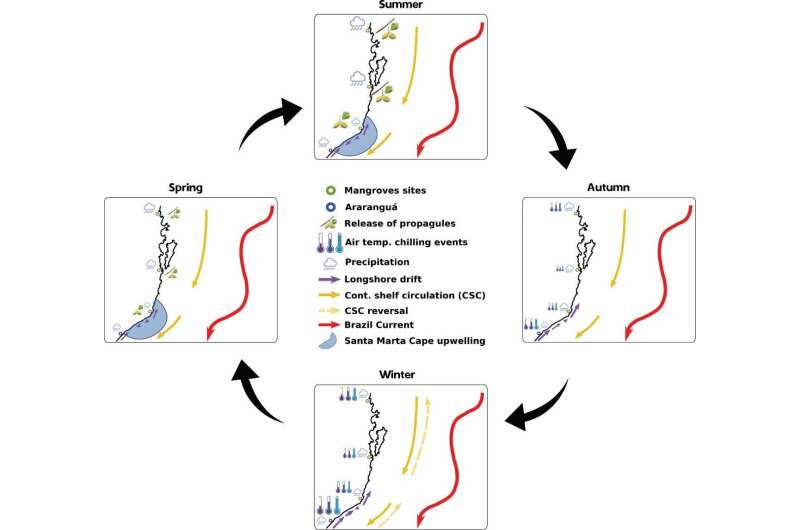 BRAZIL - Mangrove ecosystems are distributed around the world, along tropical and subtropical coastlines. However, they do not extend beyond certain latitudes, even though the sites seem suitable for them. VUB researcher Ari Ximenes, with researchers from ULB and UCL, has now cracked this question among mangrove bio-geographers, by studying sites off the eastern coast of South America. Ximenes says that their "results show that here, several factors combine to prevent the southward spread of mangrove species. The northward longshore drift that prevails throughout the year is the biggest factor. Another factor is the chilling temperature. The winters are often just a little too cold, and during spring and summer you often have cold water upwelling, which can affect the viability of the propagules." Mangrove forests are of great ecological and socio-economic importance. They have an important place on the international climate agenda due to their pronounced carbon storage capacity. These tree and shrub species can also be found on the eastern South American coast. But barely 75km south of the southeastern American mangrove border there, where the Araranguá river flows into the Atlantic Ocean, there are no mangrove forests. This is puzzling, because the landscape form of the estuary actually appears suitable for mangroves. READ MORE SCCF completes experimental living shoreline project  USA - Mangrove wetland habitats lining Southwest Florida’s coastlines are highly effective in diminishing wave action and damage from high winds, the Sanibel-Captiva Conservation Foundation reported. They also trap pollutants and provide habitat for sea life, including the endangered smalltooth sawfish. When biologists notice areas of mangrove-covered shorelines disappearing from erosion, it is a cause for serious concern. Nearly 18 months ago, a Dutch marine biologist contacted the SCCF about designing, funding and installing a pilot project on Sanibel to protect mangroves threatened by erosion. Completely funded by the Dutch government, the project will provide an alternative to concrete and riprap, which often lead to additional mangrove loss. The SCCF reported that Netherlands-based BESE Products uses a biodegradable, habitat restoration structure made from the production waste of potato chips and french fries. The waste is collected in the Netherlands and sent to Germany, where it is manufactured into a 3-D lattice that helps deposit sediment and can protect mangrove seedlings along high-energy shorelines, like those on Woodring Road. The goal of the project is to protect the mangroves along Woodring, a stretch of Sanibel’s shoreline that has been gradually disappearing over the past few decades. READ MORE ASIA Waskita plants 40 thousand mangrove seeds along Tangerang's shoreline 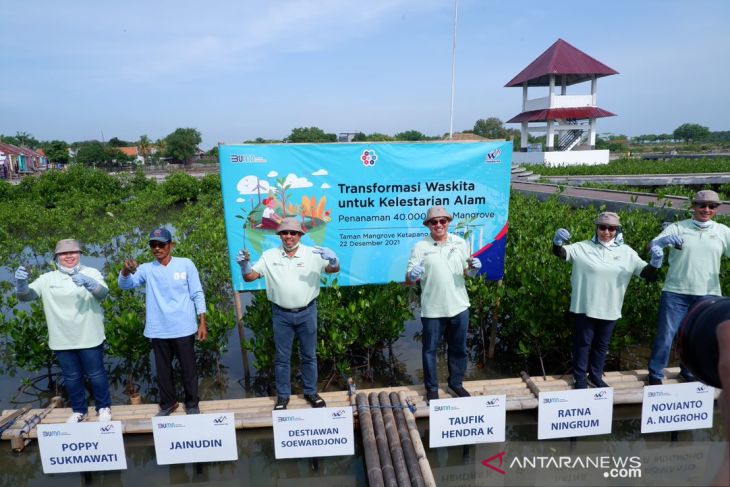 INDONESIA - State-owned construction company PT Waskita Karya (Persero) planted 40 thousand mangrove seeds along the shore of Ketapang Mangrove Park, Tangerang, Banten, as a form of support to environment preservation. "This activity is a form of Corporate Social Responsibility (CSR) program that encourages sustainable development," Executive Director of Waskita Karya Destiawan Soewardjono noted in a written statement here on Thursday. There are 250 thousand mangroves comprising 16 types, such as the rhizopora and bruguiera, in an area spanning 14.5 hectares. The seed-planting support from Waskita will enrich and support mangrove preservation efforts in that region, he remarked. Soewardjono explained that the company was involved in nurturing the environment, so that it remains preserved and sustainable, as climate changes and carbon emissions had become a global issue. READ MORE OCEANA Mangrove forests are expanding on remote sand cays in the Great Barrier Reef. Why?  AUSTRALIA - OUR SMALL INFLATABLE boat pulls up to the pristine white sands of uninhabited Pipon Island, off the coast of far north Queensland, Dr Jeff Kelleway is first to jump out. Wearing gumboots and a floppy hat, and with a compass hanging around his neck, he is hardly the picture of a typical weekend visitor to the Great Barrier Reef (GBR). Following Jeff, a research fellow in the School of Earth, Atmospheric and Life Sciences at the University of Wollongong (UOW), is Associate Professor Dr Sarah Hamylton, a marine geographer at UOW, and PhD students Zachary Nagel-Tynan and Oxana Repina. They are here to map and investigate the Howick Group National Park (Cape York Peninsula Aboriginal Land), a remote collection of 19 continental islands and sand cays located in the Coral Sea off the coast of Cape Melville, in the northern section of the GBR. With an array of plastic suitcases, tape measures and digging tools strewn across the sand around them, the researchers pore over a series of digital images as they plan their day’s activities.“Isn’t this totally amazing?” Sarah asks as she looks out over the empty, mangrove-lined beach. “There is a real sense of remoteness out on these unspoilt islands.” Sarah is leading this research project, which will see the team collect thousands of aerial images of the islands using an unmanned aerial vehicle, or drone. They will compare their drone images with hand-drawn maps created in 1928 and photographs taken in 1974. The team will also conduct mangrove forest surveys on 10 different islands in the Howick Group. The data will be used to monitor mangrove expansion and other changes to reef environments. It’s critical information for tracking the effects of climate change. READ MORE |
ACTION ALERTS Stop construction work on a private port In Defense of the Quilombo Boca Do Rio TAKE ACTION! Tell Sumitomo to stop building polluting coal power in Bangladesh! TAKE ACTION!
MAP Website en Español PRINTING EARLY NOV 13 Year old Linda Li "Mangrove Adventure" from Kid Dream Art School
Video: Mangroves for the Future WANT TO GET INVOLVED?
Like this newsletter? Pease consider donating to MAP to keep it going. Giving could never be easier
Interested in connecting or working with MAP? Check out our opportunities here MANGROVE ISSUES Want to learn more about mangroves? What is CBEMR? Download MAP's 2 page CBEMR Information Sheet containing links to all MAP's CBEMR resources – CLICK HERE View MAP’s uploaded Videos at Question Your Shrimp Consumer/Markets Campaign! Mangroves: Guidebook to Malaysia – Click Here SHARE MAP'S VISION Our short documentary, Reducing the Risk of Disaster through Nature-Based Solutions : Mangroves Marvellous Mangroves Curriculum The Marvellous Mangroves Curriculum begins with a simple philosophy – getting future generations to not only learn about, but understand the importance of mangrove forests. VISIT
Marvellous Mangroves Curriculum in Bangladesh - WATCH VIDEO
Like this newsletter? Pease consider donating to MAP to keep it going. Giving could never be easier
"Question Your Shrimp" Campaign Question Your Shrimp - is it really sustainable? Sign the Petition
We strive to keep active links in our newsletter. However, due to circumstances beyond our control, occasionally links to stories may become broken. If you find a link to a story is not functioning, please cut and paste the headline into your browser search bar. In most cases you should be able to locate the original story. Not yet a MAP News subscriber? |
|
Mangrove Action Project Click here to view past newsletters
|
|
Search News Archive
Saturday, December 25, 2021
MAP News Issue #536 - Dec 25, 2021
Saturday, December 11, 2021
MAP News Issue #535 - Dec 11, 2021
|
The MAP News |
|
|
MAP Website en Español haga clic aqui
FEATURED STORY Maybe world leaders are finally reading the writing on the wall?  USA - Maybe they finally understand that the recent frightening weather, massive forest fires, droughts and floods are not just chance occurrences but due to our planet-level experiment of increasing CO2 levels from the pre-industrial 280ppm to 415ppm today. There’s no argument about these numbers or the greenhouse gas effect – it’s just straight physics. We can debate the link between CO2 levels and climate change. Or we can take practical action now. Please support MAP to do what the world should be doing, climate change or not – conserving existing mangroves and restoring degraded forests, as fast as possible. MAP is blessed by having a passionate, experienced, highly qualified and loyal team. We need funding to run more capacity-building and outreach programs, and advocate for mangroves at conferences and meetings such as COP26. You can help us to increase MAP’s impact by donating to MAP now. For donations of $35 or more, we will send you our beautiful 2022 Children’s Mangrove Art Calendar to show our appreciation. READ MORE AFRICA Mangrove-workers killed in Nigeria southern oil region  NIGERIA - Gunmen killed two Nigerian contractors working for a local subsidiary of Italy’s ENI and a security officer in an attack in Nigeria’s oil-producing Niger Delta region, a security official and the company said on Monday. Nigeria struggled with violence in its Niger Delta until a 2009 amnesty deal with militants mostly stopped attacks on oil installations and kidnappings. But violence still occurs and pirates and criminal gangs operate in the region, targeting ships offshore for kidnapping raids on their crews. Gunmen killed two workers with ENI subsidiary Nigerian Agip Oil Company and an official from the Nigerian Security and Civil Defence Corps (NSCDC) on Sunday in the oil-producing state of Bayelsa, local NSCDC spokesman Ogbere Solomon said. In a statement, ENI said the contractors were working on a mangrove restoration project with their security detail when they were attacked by an armed group. It said three people were killed and two injured. The project was to restore mangroves damaged by illegal refineries and spills from sabotage to oil installations in the area, it said. READ MORE Nigerian wellhead has spilled 2 mln barrels of oil and gas, says senate 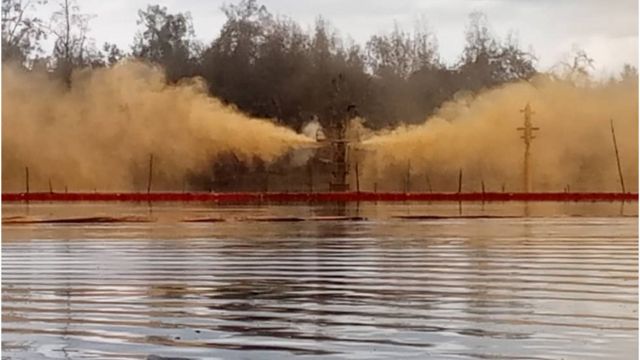 NIGERIA – A wellhead leak in Nigeria's Bayelsa state has spewed two million barrels of oil and gas equivalent into the Delta creeks, the senate said. Nigerian oil firm Aiteo Eastern E&P reported the "extremely high order" leak from the Santa Barbara wellhead that it jointly owns with state oil company NNPC in early November. Weeks later, the wellhead was still violently spewing oil and gas. "Attempts to stop the continuous oil and gas spill by the operators had failed repeatedly for over one month running, wasting an estimated over 2 million barrels of hydrocarbon and gas," a senate resolution stated, adding it showed "a disappointing appearance of technical incompetence in handling the incident on the part of Aiteo." The resolution, put forward by Bayelsa Senator Biobarakuma Degi-Eremienyo, expressed concern over the impact of the spill on the mangrove forests, aquatic life and air and water in the region. READ MORE How data and community can save Zanzibar's mangroves  TANZANIA - Digital Earth Africa is helping Zanzibar fight the effects of climate change and protect the island's precious mangrove habitat. The story is also part of a new documentary series, Climate Next. Zanzibar Island, located off the coast of Tanzania in East Africa, spans 950 square miles of lush vegetation and idyllic beaches that support its tourism-driven economy, in addition to the agricultural and fishing industries that help feed its 1.5 million inhabitants. Zanzibar is known for its most famous coastal ecosystem: mangrove forests. Mangroves are an incredibly hardy family of trees and shrubs-their deep, salt-tolerant roots thrive on coastlines and serve as natural barriers to storms and rising seas. In Zanzibar, the forests protect the island's human residents and help fish hide from predators. But the mangroves also help protect the planet. READ MORE Loans Keep Women Afloat As They Plant Fast-Vanishing Mangroves 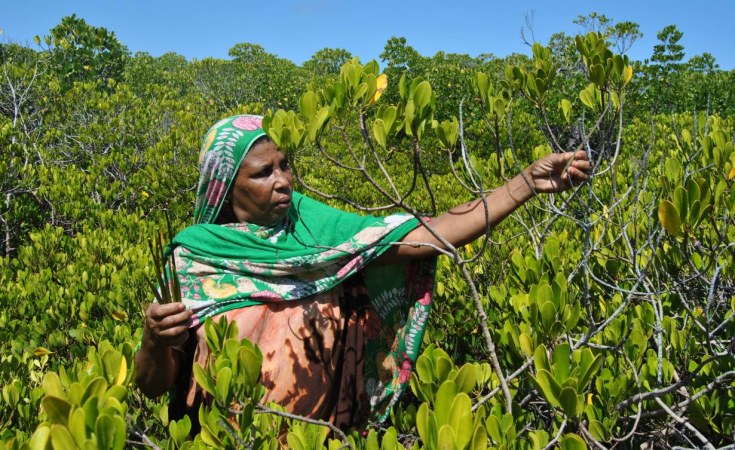 KENYA - When she was growing up, Tima Abudhi remembers watching her neighbours cut away at the mangrove forests around her village on Pate Island, on Kenya's east coast, chopping down the coastal trees to build houses or to sell as timber. As the mangroves disappeared, so did the fish that live and breed among their roots - a disaster for the fishing village of Kizingitini, recalls the now 55-year-old mother of five. "We depended on fish for food. We ran out of food and money as well because we also trade in fish. Our children suffered the most," she said. The threat to their livelihoods and homes motivated Abudhi and other women to start replanting the mangroves, often spending all day at the beach, taking time away from caring for their families and running their small businesses. Protecting the mangroves over the past few decades has taken a toll on their incomes, but they felt it was a matter of urgency, Abudhi said. READ MORE AMERICAS Ph.D. student fights for mangroves — not concrete seawalls — on Miami's shorelines 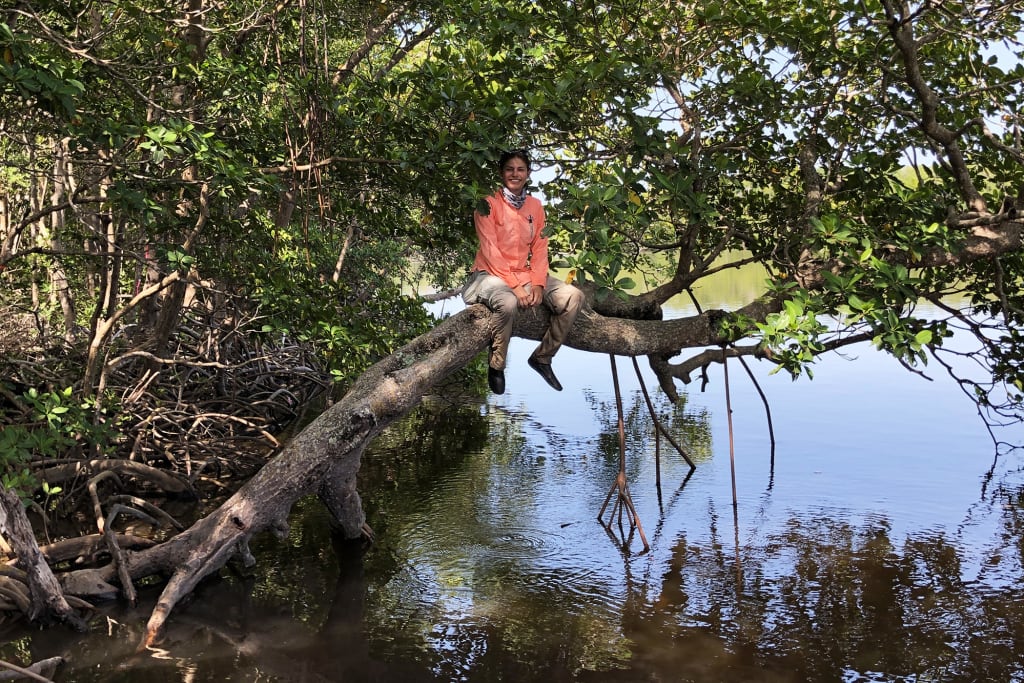 USA – Miami’s future could be one of enormous concrete seawalls stretching along the coast. Or something a little different — where mangroves become the type of infrastructure that really protects the city. Marbelys Garriga is fighting for a future where coastal urban landscape and design is dominated by living shorelines that benefit precious water resources, protect wildlife and help ensure humans can continue to live in coastal communities. The FIU Institute of Environment Ph.D. student is spearheading a project to gather quantifiable evidence on how traditional, more well-known shoreline infrastructure, such as seawalls or rip rap retaining walls, compare to natural forms, like mangroves and oysters. She’s focused on how these different types of infrastructures could impact an issue Miami continues to grapple with — water quality. READ MORE Funders looking for bankable eco-projects  BVI - The British Virgin Islands (BVI) has much work to do if it is going to be able to create revenue generating projects in a blue carbon economy. This is according to Natural Resources Minister, Vincent Wheatley, who detailed some of the interactions he had with investors and other officials at the recent Joint Ministerial Council (JMC) held in Glasgow in the United Kingdom (UK). According to the minister, the BVI‘s mangroves and seagrass are two commodities which the territory has in abundance that are already garnering interest from potential investors. “They are very much interested in helping us turn those natural assets into a new economy that can generate income for the BVI,” Wheatley said. Wheatley said one of the topics he was able to make a presentation on, was mangroves. “When it comes to mitigation against climate change, they’ve discovered that mangroves are very efficient at removing carbon from the atmosphere. So mangrove has become kind of the new gold right now,” the minister said. READ MORE ASIA DOE pushes ‘mangrove sequestration’ to manage coal plants’ emissions  PHILIPPINES - To pare the country’s carbon emissions without compromising energy security, the Department of Energy (DOE) is examining the feasibility of “mangrove sequestration” so carbon emissions of coal plants can be offset or managed. Energy Secretary Alfonso G. Cusi noted that while the department gives premium on the country’s energy security needs, “we should actively explore the potential of out-of-the-box solutions that could reduce the harmful greenhouse gas emissions of coal plants.” The energy chief qualified that the Philippines is still at that stage wherein it cannot just totally eliminate coal plants because these generating assets serve a key component of the power mix – primarily in the need to satiate baseload electricity requirements; while renewables have yet to establish their foothold on reliability with the support of battery storage. As propounded by experts, mangroves are among the top carbon-capturing ecosystem on the planet – and they could sequester even higher scale of carbon dioxide (CO2) emissions than other biomes or the collection of flora and fauna occupying a major habitat on Earth. READ MORE Indonesia prepares regulation to help fund mangrove restoration /cloudfront-us-east-2.images.arcpublishing.com/reuters/CMDFBEDARBPMNEDZQ6M5YD25KQ.jpg) INDONESIA - Indonesia is preparing regulation to help finance a programme of mangrove restoration work from sources outside of the state budget, as part of its carbon-neutrality efforts, a senior government official told Reuters recently. Indonesia launched a mangrove rehabilitation programme in March, aiming to restore 600,000 hectares (1.5 million acres) of degraded mangrove by 2024 to help absorb carbon emissions. Southeast Asia's largest economy, which is also the world's largest archipelago country, aims to reach carbon neutrality by 2060 or sooner. This year the government had aimed to restore 150,000 hectares of mangroves, but it has cut that goal to 33,000 hectares due to limited funding from the state budget as the government reallocates funds to cope with the coronavirus pandemic. READ MORE Illegal mangrove logging surges in Indonesia’s Batam amid economic hardship  INDONESIA - Indonesian officials in Sumatra’s Riau Islands province have reported a 280% increase in seizures of mangrove wood from would-be smugglers this year, attributing the surge in illegal logging to economic hardship among local fishers. Provincial police said they had confiscated 21,186 mangrove logs so far in 2021, up from 7,647 logs in all of 2020. They said much of this mangrove wood came from the main island of Batam, with the logs destined for nearby Malaysia and Singapore. Police estimated the illegal sale of the logs would have deprived the state of 234 million rupiah ($16,300) in revenue. Logging of mangroves is illegal in Indonesia and punishable by up to five years in prison and 2.5 billion rupiah ($174,000) in fines. A resident who asked not to be identified said a growing number of fishermen had turned to cutting and selling mangrove trees to earn a living because of declining fish catches. Customs officials said the economic hardship wrought by the COVID-19 pandemic has also compounded the problem. READ MORE Jakarta vows to maximize economic potential in coastal, island areas 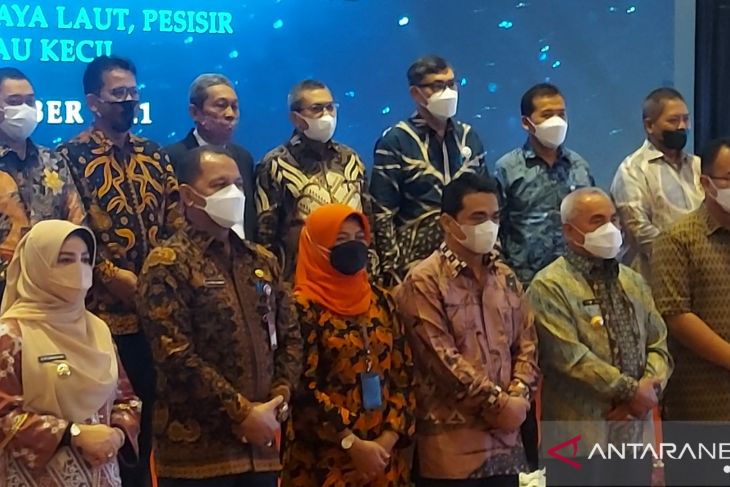 INDONESIA - The Jakarta administration remains resolute to maximizing the economic potential in coastal and island territories through the fishers' community empowerment program, Jakarta Deputy Governor Ahmad Riza Patria stated. "We want the community, especially the fishers' community in Jakarta, to obtain training, mentoring, and financial support through the Seribu Islands' Jakpreneur. We will continue to provide help," Patria affirmed. The deputy governor delivered the remarks at the 10th National Conference on Marine Resources, Coasts, and Small Islands Management at Putri Duyung Resort, Ancol Dreamland, North Jakarta, on Thursday. The enrichment program to boost the fishers' capacity aims to enable Jakarta's coasts, sea, and small islands to become the drivers of the blue economy for boosting social welfare through measurable governance. READ MORE |
ACTION ALERTS Stop construction work on a private port In Defense of the Quilombo Boca Do Rio TAKE ACTION! Tell Sumitomo to stop building polluting coal power in Bangladesh! TAKE ACTION!
MAP Website en Español PRINTING EARLY NOV 13 Year old Linda Li "Mangrove Adventure" from Kid Dream Art School
Video: Mangroves for the Future WANT TO GET INVOLVED?
Like this newsletter? Pease consider donating to MAP to keep it going. Giving could never be easier
Interested in connecting or working with MAP? Check out our opportunities here MANGROVE ISSUES Want to learn more about mangroves? What is CBEMR? Download MAP's 2 page CBEMR Information Sheet containing links to all MAP's CBEMR resources – CLICK HERE View MAP’s uploaded Videos at Question Your Shrimp Consumer/Markets Campaign! Mangroves: Guidebook to Malaysia – Click Here SHARE MAP'S VISION Our short documentary, Reducing the Risk of Disaster through Nature-Based Solutions : Mangroves Marvellous Mangroves Curriculum The Marvellous Mangroves Curriculum begins with a simple philosophy – getting future generations to not only learn about, but understand the importance of mangrove forests. VISIT
Marvellous Mangroves Curriculum in Bangladesh - WATCH VIDEO
Like this newsletter? Pease consider donating to MAP to keep it going. Giving could never be easier
"Question Your Shrimp" Campaign Question Your Shrimp - is it really sustainable? Sign the Petition
We strive to keep active links in our newsletter. However, due to circumstances beyond our control, occasionally links to stories may become broken. If you find a link to a story is not functioning, please cut and paste the headline into your browser search bar. In most cases you should be able to locate the original story. Not yet a MAP News subscriber? |
|
Mangrove Action Project Click here to view past newsletters
|
|
-
The community of adults and youth in Cayman Islands has come together recently to release a series of educational videos. Each is geared to...
-
By Alfredo Quarto, Program & Policy Director Co-founder, MAP There is a rather urgent situation concerning the bio-invasion of the Son...
-
By: Isabel Robinson, MAP Volunteer Intern Some months ago I decided to come to Thailand and do an internship in mangrove conservation, ...
MAP News Issue #596 = April 20, 2024
ENTRIES NOW OPEN! Mangrove Photography Awards 2024 10 Years Celebrating Mangroves GLOBAL - MAP has launched our 10th Mangrove Photograp...



